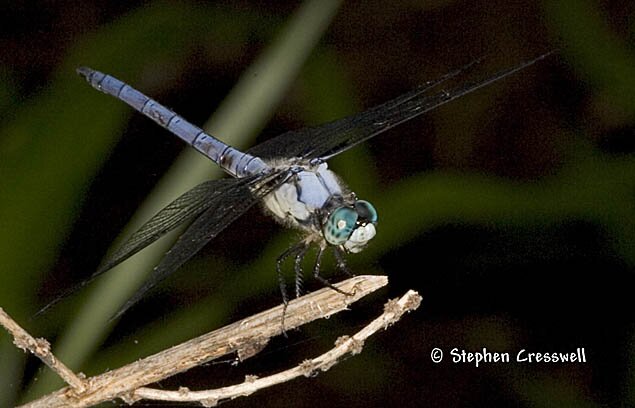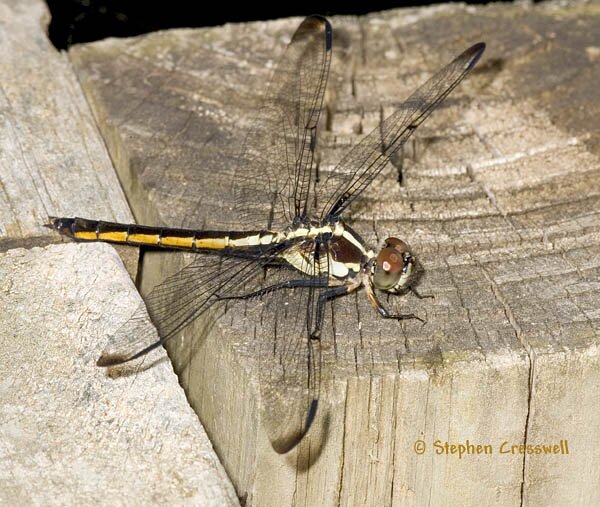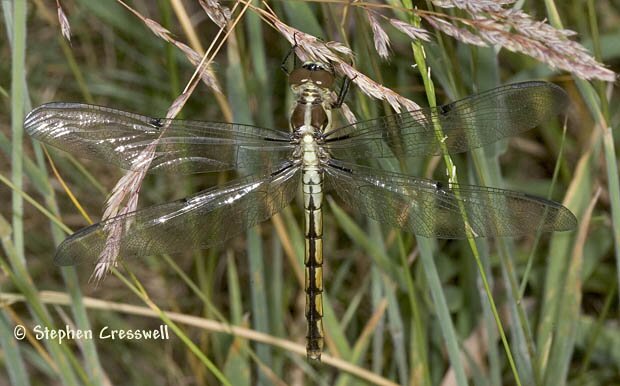
Family: Libellulidae
Length: typically 53-57 mm
Family: Libellulidae
Length: typically 53-57 mm
Near the northern edge of its range in the Mountain State, the first Great Blue Skimmer in West Virginia was recorded by a DNR scientist in the summer of 2004 in Randolph County. The southern United States is the heart of its range.
It is not clear whether the Great Blue Skimmer may be expanding its range, influenced by global warming or some other cause.
With this species, look for a white face and dark wingtips. Also look for dark stigmas, dark spots at the nodus of the wings, and perhaps a dark streak at the base of the wings.
Mature males have a pale blue abdomen. Males thorax is pale blue on the dorsal surface, and whitish on the sides.
Immatures have a mostly yellow abdomen with a brown median stripe on top. The sides of the thorax are very pale below, while the dorsal surface of the thorax is brown with a median white stripe.
As females mature their abdomens turn brown.
Eye color is brown in immature Great Blue Skimmers, but becomes blue in adults, both male and female.

|
| Above: In immature Great Blue Skimmers, look for brown eyes and a yellow abdomen with a brown dorsal stripe. The lower sides of the thorax are very pale. The dark wingtips are present in both sexes. |
 |
| Above: This recently emerged Great Blue Skimmer was photographed in Randolph County, one year after the first member of this species was collected in the Mountain State. Notice the dark upper surface of the thorax with its median white stripe. |


